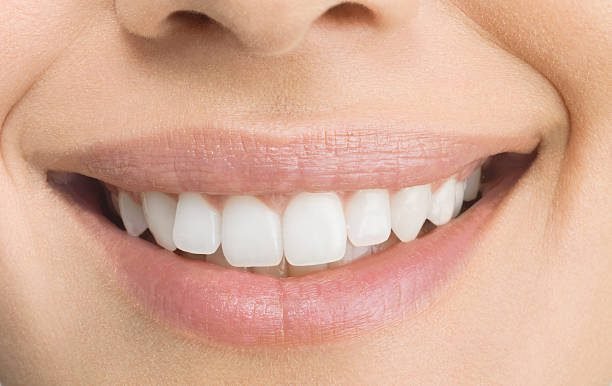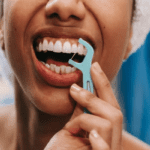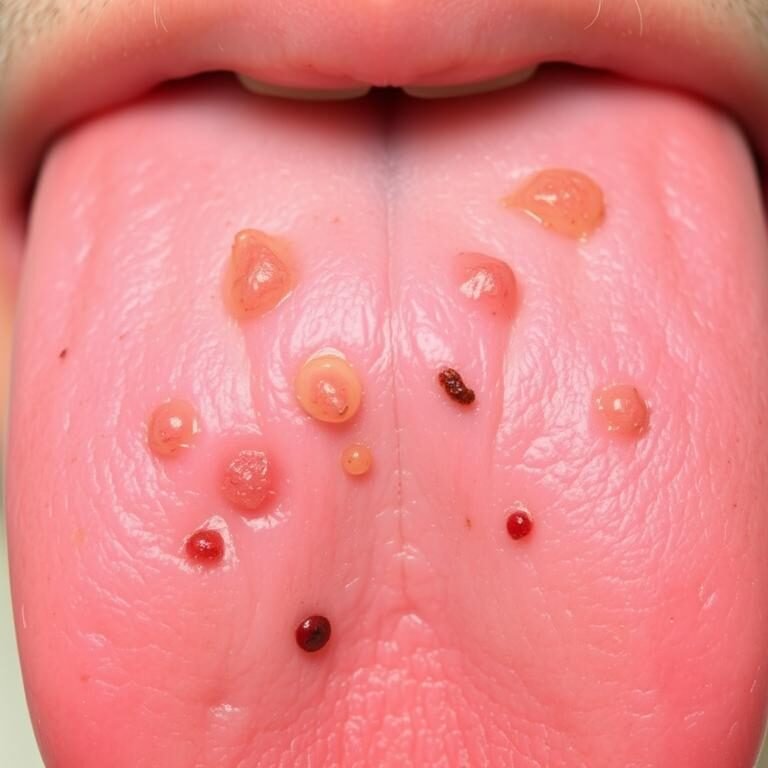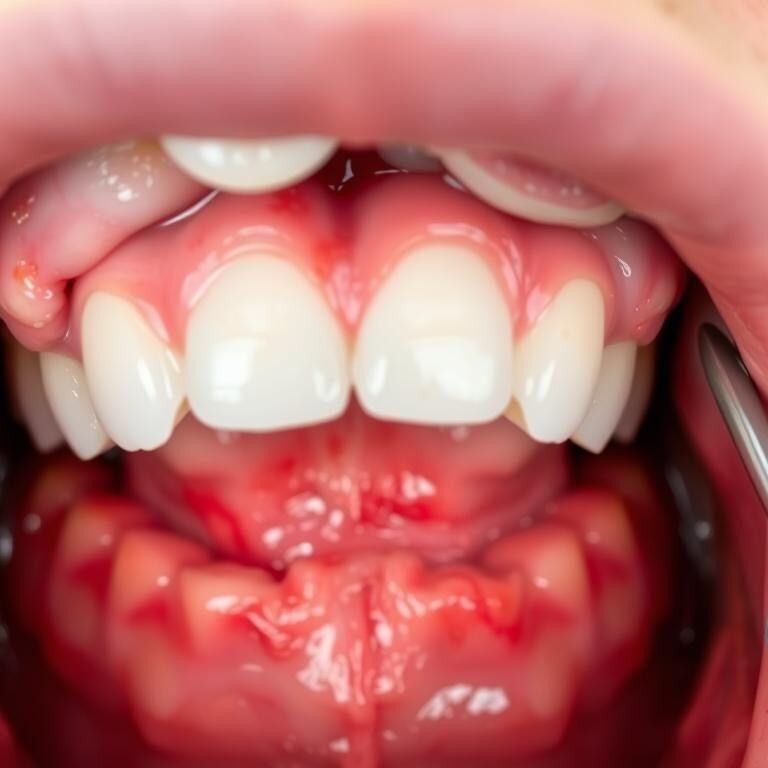Table of Contents
The Formation of Teeth: A Complex Process from Birth to Adulthood
Tooth formation is a intricate process that begins long before a baby is born and continues well into adulthood. It is a remarkable journey guided by a combination of genetics and environmental factors. During prenatal development, tooth buds start to form as early as six weeks gestation, and by the time a baby is born, the primary teeth are largely developed and just waiting to erupt.
The process of tooth formation can be categorized into four distinct stages: bud, cap, bell, and crown. During the bud stage, the foundation of the tooth is laid as the cells in the jawbone multiply and create small, bud-like structures that will eventually become the tooth. In the cap stage, these buds begin to shape into the different components of the tooth, such as the enamel, dentin, and pulp. The bell stage builds upon this foundation by further shaping and refining the tooth, creating the distinct crown shape that we associate with teeth. Finally, during the crown stage, the tooth erupts through the gums, making its grand entrance into the oral cavity.

The Role of Genetics in Determining the Appearance of Our Teeth
Our teeth play a critical role in both our oral health and overall appearance. While environmental factors such as diet and oral hygiene practices undoubtedly influence the health and appearance of our teeth, the role of genetics in determining these aspects should not be overlooked. Genetics plays a significant part in the shape, size, and alignment of our teeth, and understanding this connection can empower individuals to take proactive steps towards maintaining good dental health.
Research has revealed the strong hereditary component in dental traits, with specific genes associated with tooth development and morphology. For instance, genetic variations in the MSX1 and PAX9 genes have been identified as influential factors in the formation of teeth, impacting both their size and shape. The presence of certain gene alleles can result in deviations from the normal dental developmental process, leading to conditions such as missing teeth, tooth crowding, or malocclusion.

It is important to note that while genetics may predispose individuals to certain dental traits, environmental factors can also modulate their expression. Factors like diet, oral hygiene practices, and exposure to fluoride can influence the outcome of genetic variations in the appearance and health of our teeth. Therefore, while we may have limited control over our genetic makeup, we can still optimize our dental health through a combination of genetic awareness and proactive oral care.
The Influence of Environmental Factors on Dental Development
Environmental factors play a significant role in the development of teeth, with various external influences shaping their formation from an early age. Research has shown that exposure to certain substances and behaviors can impact dental development, leading to potential complications down the line. For instance, the consumption of sugary foods and beverages can increase the risk of tooth decay in children, as the bacteria in the mouth feed on sugar and produce acid that erodes tooth enamel. Additionally, exposure to tobacco smoke, both in utero and during childhood, has been linked to delayed tooth eruption and developmental abnormalities in teeth. These findings emphasize the importance of maintaining a clean and healthy environment for children, as it directly impacts their dental health.
Not only do environmental factors affect teeth development, but they can also influence the alignment and structure of teeth. Habits such as thumb-sucking, prolonged pacifier use, and tongue thrusting can exert pressure on the developing teeth, leading to malocclusion or improper alignment. Moreover, certain traumatic events, such as dental injuries or accidents, can interrupt normal dental development, affecting the eruption of permanent teeth or causing enamel defects. It is crucial for parents and caregivers to be aware of these factors and take preventive measures to minimize their impact on children’s dental development. Regular dental check-ups, early intervention, and proper oral hygiene practices can help mitigate the effects of environmental factors on dental health and ensure optimal development.
Understanding the Stages of Tooth Formation in the Womb
Tooth formation is a remarkable process that begins even before a baby is born. Understanding the stages of tooth formation in the womb can provide valuable insights into the development of a healthy smile.
During the early stages of pregnancy, the cells that eventually give rise to teeth begin to form in the lining of the oral cavity. These cells, known as dental lamina, gradually grow and differentiate to form the primary teeth, also known as baby teeth. By the time a baby is born, the primary teeth are already present beneath the surface of the gums, awaiting their time to emerge.
As the baby grows and develops in the womb, specialized cells called ameloblasts and odontoblasts start to produce the enamel and dentin, respectively, that make up the structure of the teeth. This intricate process continues throughout pregnancy, with each tooth undergoing its own unique developmental timeline. By the time a child reaches the age of 2 to 3, all 20 primary teeth have typically erupted, setting the stage for a lifetime of healthy oral development.
| Stage of Tooth Formation | Description |
|---|---|
| Initiation Stage | Begins around the 6th week of fetal development. |
| Dental lamina forms, signaling tooth development. | |
| Bud Stage | Occurs around the 7th to 8th week. |
| Tooth buds develop from the dental lamina. | |
| Cap Stage | Around the 9th to 10th week. |
| Tooth buds develop into tooth caps. | |
| Bell Stage | Takes place around the 11th to 12th week. |
| Tooth caps begin to resemble mature teeth. | |
| Apposition Stage | Begins around the 14th week. |
| Mineralization of the tooth tissues occurs. | |
| Maturation Stage | Happens from the 16th week until birth. |
| Enamel, dentin, and cementum further develop. | |
| Eruption | Occurs after birth when teeth start to emerge. |
Understanding the stages of tooth formation in the womb is crucial for dental professionals and parents alike. By recognizing the importance of prenatal oral health and providing appropriate guidance and care, we can help ensure that children start their lives with strong and healthy teeth.
The Importance of Proper Nutrition for Healthy Teeth Development
Proper nutrition plays a fundamental role in the healthy development of teeth. From the moment they begin to form in the womb, our teeth require a variety of nutrients to develop properly and maintain their strength throughout life. Adequate intake of essential vitamins and minerals, such as calcium, vitamin D, and phosphorus, is crucial for the formation of strong tooth enamel and healthy jawbones.
Without sufficient nutrition, the development of teeth may be compromised, leading to dental problems later in life. Studies have shown that poor nutrition during tooth development can result in enamel defects, delayed tooth eruption, and an increased risk of tooth decay. In fact, a lack of essential nutrients in early childhood has been associated with an increased prevalence of cavities in permanent teeth.

It is important to understand that a balanced diet, rich in fruits, vegetables, lean proteins, and dairy products, provides the necessary nutrients for healthy teeth development. Additionally, limiting the intake of sugary and acidic foods and beverages can help prevent dental problems. Consulting with a dental professional or a registered dietitian can provide valuable guidance and ensure that proper nutrition is prioritized for optimal dental health.
Factors that Can Disrupt the Normal Development of Teeth
The development of teeth is a remarkably intricate process, carefully orchestrated by a combination of genetic and environmental factors. Under normal circumstances, teeth grow and erupt in a predictable pattern, ensuring a functional and aesthetically pleasing smile. However, there are certain factors that can disrupt this delicate process, leading to dental abnormalities and complications.
One of the primary culprits that can interfere with the proper development of teeth is genetics. Research has shown that genetic factors play a significant role in determining the size, shape, and alignment of our teeth. Certain genetic conditions, such as amelogenesis imperfecta and dentinogenesis imperfecta, can cause abnormalities in the enamel and dentin, leading to weakened teeth that are prone to decay and breakage. Additionally, genetic variations can affect the eruption timing and sequence of teeth, leading to misalignment and crowding issues.
Another factor that can disrupt dental development is the presence of environmental factors. Poor maternal nutrition, particularly during pregnancy, has been linked to developmental defects in teeth. Insufficient intake of essential nutrients, such as calcium, vitamin D, and phosphorus, can impair the formation and mineralization of teeth, resulting in weaker enamel and increased susceptibility to cavities. Environmental toxins, such as tobacco smoke and certain medications, can also interfere with tooth development, leading to enamel hypoplasia and discoloration.
In conclusion, while teeth development is a complex and fascinating process, it is not immune to disruption. Genetic factors can determine the appearance and alignment of our teeth, while environmental factors can impact their formation and mineralization. Recognizing these factors and taking appropriate preventive measures, such as maintaining a healthy diet and avoiding harmful substances, can help promote optimal dental development. By understanding the factors that can disrupt the normal development of teeth, dental professionals can better assist their patients in achieving and maintaining a healthy smile.
The Impact of Oral Habits on the Alignment and Structure of Teeth
Oral habits play a significant role in the alignment and structure of our teeth. These habits, such as thumb sucking, tongue thrusting, and prolonged pacifier use, can exert pressure on the developing teeth and jawbones, leading to malocclusions and other dental issues.
Thumb sucking, for example, can cause the front teeth to protrude and the upper and lower jaws to become misaligned. This misalignment, known as an open bite, can affect speech patterns and chewing efficiency. Similarly, tongue thrusting, where the tongue pushes against the front teeth during swallowing or speaking, can result in an anterior open bite and affect the positioning of the teeth.
Prolonged pacifier use can also impact dental development. The constant pressure exerted by the pacifier can cause the palate to become high and narrow, leading to a crossbite. This is when the upper teeth bite inside the lower teeth instead of outside them. Additionally, pacifier use can affect the position of the front teeth, causing them to tip forward or become misaligned.
| Oral Habit | Impact on Teeth Alignment and Structure |
|---|---|
| Thumb sucking | Can lead to misalignment of teeth, especially in children, as it can push teeth forward and affect the growth of the jaw. |
| Tongue thrusting | May result in an open bite or misalignment of teeth due to the pressure exerted by the tongue against the teeth during swallowing. |
| Nail biting | Can cause teeth to shift out of alignment or result in chipped or cracked teeth over time. |
| Teeth grinding (Bruxism) | Can lead to wear and tear on teeth, causing them to become uneven and potentially leading to misalignment. |
| Mouth breathing | May contribute to dental arch changes and lead to dental crowding or malocclusion over time. |
| Chewing ice or hard objects | Can cause enamel wear, chips, or cracks in teeth, which may eventually affect their alignment. |
It is crucial for parents to be aware of these oral habits and discourage them as soon as possible. Early intervention can prevent long-term dental issues and ensure proper alignment and structure of the teeth. Consulting with a pediatric dentist or orthodontist can provide guidance and strategies to address these habits and promote healthy dental development in children.
Sources:
– ABC Pediatric Dentistry. (n.d.). Thumb, Finger and Pacifier Habits. Retrieved from [Website]
– American Academy of Pediatric Dentistry. (2018). Policy on Thumb, Finger, and Pacifier Habits. Retrieved from [Website]
– Bayat, M., et al. (2014). The Impact of Nonnutritive Sucking Habits on the Developing Occlusion: A Cross-Sectional Study. [Article]
– Silva, F., et al. (2013). Influence of Breast and Bottle Feeding on the Development of Malocclusions in Primary Dentition. [Article]
The Role of Baby Teeth in Preparing for Permanent Teeth
The role of baby teeth in preparing for permanent teeth is often overlooked, but it plays a crucial role in a child’s overall dental development. Baby teeth, also known as primary teeth, start to appear around six months of age and serve as placeholders for the permanent teeth that will eventually replace them. These temporary teeth help guide the permanent teeth into their proper positions and provide the necessary space for them to erupt correctly.
During the transition from baby teeth to permanent teeth, a child’s jaw continues to grow, providing ample space for the larger permanent teeth to come in later. Baby teeth act as guideposts, ensuring that the permanent teeth erupt in the correct order and alignment. If baby teeth are lost prematurely due to decay or injury, neighboring teeth may shift and fill in the gap, causing crowding or misalignment issues that can affect the development of permanent teeth. Therefore, proper oral hygiene and regular dental check-ups are crucial to ensure the preservation of baby teeth and the optimal preparation for the permanent teeth that will follow.
Common Dental Issues in Childhood and Their Impact on Smile Development
Dental issues are common among children and can have a significant impact on their smile development. The primary teeth, also known as baby teeth, play a crucial role in guiding the eruption of permanent teeth and maintaining proper oral health. However, various factors can disrupt the normal development of teeth, leading to common dental issues that require attention.
One of the most prevalent dental issues in childhood is tooth decay. According to the World Health Organization, dental caries affects nearly 60-90% of school-age children worldwide. Poor oral hygiene, excessive consumption of sugary foods and drinks, and inadequate fluoride exposure are known risk factors for tooth decay. If left untreated, decayed baby teeth can cause pain, infection, and even affect the alignment of permanent teeth, ultimately impacting the child’s smile development.
Another common dental issue among children is malocclusion, which refers to misalignment or improper positioning of the teeth when the jaws are closed. This can occur due to genetic factors or habits such as thumb-sucking, prolonged bottle-feeding, or pacifier use. Malocclusion not only affects the appearance of the smile but also hinders proper chewing, speech development, and can even lead to self-esteem issues as the child grows older.
Addressing these common dental issues in childhood is essential for promoting healthy smile development. Early prevention and intervention, along with regular dental check-ups, play a crucial role in identifying and addressing problems before they worsen. Dentists, along with parents and caregivers, should prioritize oral hygiene practices, promote a balanced and nutritious diet, and discourage habits that can negatively impact dental development. By addressing these issues proactively, we can ensure that children have healthy smiles that continue to brighten their lives as they grow into adulthood.
How Orthodontic Treatment Can Correct Dental Development Issues
Orthodontic treatment plays a crucial role in correcting dental development issues, ensuring the proper alignment and structure of teeth. Through the use of various orthodontic techniques and appliances, orthodontists can address conditions such as malocclusions, overcrowding, and misalignments, which can impact the overall dental health and appearance of individuals.
One common dental development issue that orthodontic treatment can correct is malocclusion, which refers to the misalignment of the upper and lower teeth. This condition can cause difficulties in biting, chewing, and even speaking, affecting the overall functionality of the teeth. Orthodontic treatment, such as the use of braces or clear aligners, can gradually shift the teeth into their proper positions, creating a well-aligned bite and improving oral health.
Another issue that orthodontic treatment can address is overcrowding, which occurs when there’s insufficient space in the mouth for all the teeth to properly align. This can lead to teeth becoming crooked, overlapping, or impacted. Orthodontists can create sufficient space by applying pressure to gradually move the teeth, alleviating overcrowding and enhancing both aesthetic appearance and oral health.
In addition to correcting dental alignment, orthodontic treatment can also improve the overall facial structure and harmony by aligning the jaws and correcting any discrepancies. This can have a positive impact on a person’s smile, self-confidence, and even their overall well-being.
It’s important to note that orthodontic treatment is not solely cosmetic; it also plays a crucial role in preventing potential dental issues and promoting long-term oral health. By correcting dental development issues early on, orthodontic treatment can help prevent complications such as tooth decay, gum disease, and jaw joint problems in the future.
In conclusion, orthodontic treatment offers a comprehensive solution for correcting dental development issues, ensuring proper alignment and structure of teeth, enhancing functionality, and improving overall oral health and aesthetics. By seeking orthodontic care, individuals can achieve a healthy and attractive smile, while also preventing potential complications down the road.
The Importance of Regular Dental Check-ups in Monitoring Dental Development
Regular dental check-ups play a crucial role in monitoring the development of teeth, ensuring early detection and prevention of potential issues. These routine visits provide an opportunity for dentists to assess the overall oral health of patients, especially children, and identify any deviations from the normal dental development process.
During these check-ups, dentists carefully examine the teeth, gums, and jaws, noting any abnormalities or signs of improper development. X-rays may be taken to get a more detailed view of the structure and positioning of the teeth. By monitoring dental development closely, dentists can identify issues such as delayed eruption of permanent teeth, overcrowding, teeth misalignment, or abnormal growth patterns. Early detection allows for timely interventions and treatment plans to be put in place, potentially preventing more serious dental issues in the future. Additionally, dentists may provide guidance on oral hygiene practices, proper nutrition, and the use of preventive measures such as dental sealants or fluoride treatment to support healthy dental development.
Regular dental check-ups are especially important during childhood, as this is a critical period for tooth formation and growth. According to the American Academy of Pediatric Dentistry, the first dental visit should occur within six months of the eruption of the first tooth or by the child’s first birthday. These early visits establish a foundation for a lifetime of good oral health habits and ensure that any potential issues are addressed promptly.
In conclusion, regular dental check-ups provide a valuable opportunity for dentists to monitor dental development, identify any deviations or abnormalities, and take necessary steps to ensure optimal oral health. By maintaining a proactive approach through routine visits, individuals can address potential dental issues early on, leading to healthier and more beautiful smiles in the long run.
The Psychological and Social Impact of Imperfect Smiles on Individuals
The appearance of our smiles can have a profound impact on our psychological and social well-being. Individuals with imperfect smiles, whether due to tooth discoloration, misalignment, or missing teeth, often experience feelings of self-consciousness and low self-esteem. They may avoid social interactions, feel embarrassed to smile, and struggle with their overall confidence.
From a psychological perspective, the negative effects of imperfect smiles can be far-reaching. Numerous studies have shown a strong correlation between poor dental aesthetics and lower levels of self-esteem and satisfaction with one’s appearance. In fact, research has indicated that individuals with dental issues are more likely to experience anxiety, depression, and social phobia.
Socially, individuals with imperfect smiles may face challenges in building and maintaining relationships. They may fear judgment and rejection from others due to their dental appearance, leading to isolation and difficulty participating in social activities. Furthermore, studies have found a link between dental aesthetics and perceived attractiveness, with individuals often forming first impressions based on the appearance of one’s smile.
It is essential to recognize the psychological and social impact that imperfect smiles can have on individuals. By understanding these effects, dental professionals can work towards providing necessary treatments and interventions to improve dental aesthetics and enhance overall well-being.
The Evolutionary Perspective on Dental Development
The evolution of dental development is a fascinating aspect of human biology that offers insight into our ancient ancestors and the adaptations that have occurred over time. Teeth have played a crucial role in our survival, allowing us to consume a wide range of foods and aiding in the process of digestion. Through the study of fossils and comparative anatomy, scientists have been able to uncover the changes that have taken place in our dental structure throughout the course of evolution.
One of the most notable evolutionary changes in dental development is the shift from a primitive dentition resembling that of our distant relatives to the more modern arrangement commonly seen in humans today. This transformation has witnessed a reduction in tooth size, with the premolars and molars becoming larger and more specialized for processing different types of food. These modifications are believed to be adaptations to changes in diet and chewing patterns that occurred as our ancestors transitioned from a heavily plant-based diet to one that included more meat.

The study of dental development from an evolutionary perspective also sheds light on the prevalence of certain dental traits in different populations. For instance, the shape and arrangement of teeth can vary greatly among individuals and ethnic groups, and this is believed to be influenced by genetic factors that have been passed down through generations. By understanding these variations, dental professionals can provide more personalized care and treatment plans that take into account an individual’s unique dental heritage.
In conclusion, the evolutionary perspective on dental development provides valuable insights into the changes that have occurred in our teeth over time. By studying the adaptations that have taken place in dental structure, researchers can better understand the role of teeth in our ancestors’ survival and how environmental factors have shaped the development of our own dentition. This knowledge not only contributes to our understanding of human evolution but also has practical applications in dental care and treatment.
Dental Development in Other Species: A Comparative Analysis
Teeth play a vital role in various species, enabling them to perform essential functions such as chewing, hunting, and defense. While humans may be most familiar with their own dental development, studying the teeth of other species can provide valuable insights into the evolution and diversity of dental structures. By comparing dental development across different species, scientists have uncovered fascinating adaptations and variations in tooth formation and growth.
Take, for example, the comparison between humans and other primates. While humans have a characteristic dental pattern with 32 permanent teeth, our close relatives, such as chimpanzees and gorillas, exhibit variations in dental structure. These primates share similar dental developmental processes with humans, but their teeth may differ in size, shape, and eruption patterns. This disparity highlights the impact of genetics and environmental factors on dental development, underscoring the complex interplay between nature and nurture.
Furthermore, exploring the dental development of different species provides valuable insights into dental function and adaptations. For instance, the teeth of herbivores like cows and horses are specifically designed for efficiently grinding down fibrous plant material. Their dental structures reflect adaptations to their preferred diet and allow them to extract the maximum nutrition from the vegetation they consume. On the other hand, carnivores like lions and tigers possess sharp, pointed teeth suitable for tearing and cutting meat, enabling them to secure their food source effectively.
In conclusion, studying the dental development of other species offers a unique perspective on the intricate mechanisms at play in the formation and function of teeth. By comparing and contrasting dental structures across different species, scientists can unravel the complex interplay between genetics, environment, and evolutionary adaptations. This comparative analysis not only enhances our understanding of dental health and development in humans but also provides valuable insights into the diverse and dynamic nature of dental systems in the animal kingdom.
Promoting Dental Health and Preventing Developmental Issues from an Early Age
Promoting dental health and preventing developmental issues from an early age is crucial for ensuring a lifetime of oral well-being. As a dentist specializing in pediatric dentistry, I have witnessed firsthand the impact that early interventions can have on a child’s dental health. By instilling good oral hygiene habits and addressing any potential issues at a young age, we can set children on the path to a healthy and beautiful smile.
One of the key aspects of promoting dental health from an early age is educating parents and caregivers about the importance of proper oral care. By teaching them about the correct techniques for brushing and flossing, as well as the significance of regular dental check-ups, we empower them to take an active role in their child’s oral health. Additionally, providing guidance on nutrition and dietary habits that promote dental health can help prevent the development of cavities and other dental issues.
What are some common dental issues in childhood?
Some common dental issues in childhood include tooth decay, cavities, gum disease, malocclusion (crooked or misaligned teeth), and dental trauma.
How can orthodontic treatment correct dental development issues?
Orthodontic treatment, such as braces or aligners, can correct dental development issues by gradually moving teeth into their proper positions. This helps to improve the alignment and structure of the teeth, resulting in a healthier and more aesthetically pleasing smile.
Why are regular dental check-ups important for monitoring dental development?
Regular dental check-ups are important for monitoring dental development because they allow dentists to identify any potential issues early on. By regularly examining the teeth and jaw, dentists can track the progress of dental development and intervene if necessary to prevent or treat any problems.
What is the psychological and social impact of imperfect smiles on individuals?
Individuals with imperfect smiles may experience psychological and social impacts such as low self-esteem, embarrassment, and difficulty in social interactions. The appearance of one’s teeth can significantly affect their confidence and overall well-being.
Can dental development be influenced by environmental factors?
Yes, dental development can be influenced by environmental factors such as nutrition, oral habits, and exposure to certain substances. These factors can either promote healthy dental development or disrupt it, leading to issues such as tooth decay or malocclusion.
Is tooth formation a complex process?
Yes, tooth formation is a complex process that begins from birth and continues into adulthood. It involves several stages and is influenced by both genetic and environmental factors.
How do genetics determine the appearance of our teeth?
Genetics play a significant role in determining the appearance of our teeth, including their size, shape, and alignment. Certain genetic factors can also increase the risk of developing dental issues such as tooth decay or malocclusion.
Why is proper nutrition important for healthy teeth development?
Proper nutrition is important for healthy teeth development as it provides the necessary vitamins and minerals needed for the formation and maintenance of strong teeth. A balanced diet, rich in calcium, phosphorus, and vitamin D, can contribute to optimal dental health.
What are the common factors that can disrupt the normal development of teeth?
Common factors that can disrupt the normal development of teeth include poor nutrition, oral habits such as thumb sucking or pacifier use, trauma to the teeth or jaw, certain medications, and systemic diseases.
What is the role of baby teeth in preparing for permanent teeth?
Baby teeth, also known as primary teeth, serve as placeholders for permanent teeth. They help in the proper alignment and spacing of the jaw, allowing permanent teeth to erupt into their correct positions. Baby teeth also aid in speech development and facilitate chewing and digestion.












